HeadUp Games is probably best known for its work on recent hits like Dead Cells and Double Cross, along with sleeper hits such as Slime San.
Truberbrook, the studio’s most recent title, continues the developer’s tradition of variety in output. It’s a point-and-click style adventure game set in 1960s Cold War Germany, in the eponymous village of Truberbrook.
The premise is this: Hans Tannhauser, a quantum physicist from Washington state, wins a trip to the village of Truberbrook in a lottery he didn’t even know about. After arriving in the village and setting his room up for the night, he’s startled to find someone rummaging through his suitcase and discovers the thief pilfered some physics papers.
Since it’s a point-and-click game, you guide Hans around the village and some surprising surroundings to uncover the truth behind the theft, some odd disappearances, and Hans himself.
Truberbrook suffers from a few setbacks in the tech department and one or two slightly “off” design choices, but it’s an engaging and charming adventure on the whole, one that’s easy to recommend.
It’s Got the Looks
The first thing that stands out about the game is its visuals. Truberbrook absolutely oozes atmosphere. The village itself is a quaint, scenic hamlet nestled between scenic mountains that don’t look ominous at all and a lake that’s probably never seen anything terrible happen in it.
From the moment Hans steps off the bus, the game world immediately immerses the player in its gorgeous, handcrafted aesthetic, realistic lighting, and use of natural background sounds.
It’s difficult to imagine how much work HeadUp put into building every scene by hand, but their efforts most definitely pay off.
Hans visits a number of locations in the immediate area, all of which have their own atmosphere and leave a lasting impression on players.
By following the story, players eventually venture around the region in the late evening for one particular event, and the change in both Truberbrook itself and the surrounding area adds a tangible element of tension and creepiness at just the right moment, aided in no small part by the use of natural evening light.
Plenty of Personality
Truberbrook and the surrounding locales are populated by the sort of eccentric personalities you’d expect from a game in this genre, but they stand out immediately.
Part of their charm comes from their design, which wouldn’t be out of place in a Tim Burton film, especially Trude, the Guesthouse owner, along with another important character Hans encounters after the first main puzzle.
The characters were added into the built scenes via CGI, which gives the entire game a look and feel very much like something between an old Claymation film and those sci-fi TV shows from the ‘60s where the action played out with puppets in front of hand-built sets.
The other part comes from the writing and voice acting.
Each character has a unique personality that shines through within the first couple of lines you hear, and it goes a long way in making Truberbrook both feel like a real village with a history and like a place that’s completely foreign to Hans (which is good, because, well, it is completely foreign to him).
A Tale to Tell
Naturally, story is another thing a point-and-click has to nail. Truberbrook does that too, though not much can be said in detail without venturing into spoiler territory. It hits the right notes for sci-fi and mystery without tipping the balance too much in either way.
The mysteries are enigmatic enough to keep you wanting to find out what happens next. There is some more obvious foreshadowing and some obscure things here and there you know are significant, but can’t put your finger on why.
All in all, though, the player is rather like Hans — completing tasks and trying to move forward, all without a clue about where the various threads will meet and what will happen when they do.
The sci-fi elements are what you’d expect from a sci-fi narrative, all without venturing into hammy territory, and the story’s period setting is one aspect that helps keep it balanced.
As with any well-told story, there are plenty of twists and turns to keep you engaged along the way as well. The story’s overall length is similar to other games in the genre and should take between five and eight hours total, depending on how quickly you move through things.
Kickstarter backers get an extra prologue scene to play through as well, starring a character Hans meets later on. Although the scene doesn’t add too much to the narrative, it serves as a fun introduction to the game’s broader tone, mechanics, and world.
Truberbrook’s pacing is brisk, and the story’s natural peaks and troughs do an excellent job segmenting everything. Still, the developers decided to break things up into chapters, with some chapters having random sub-headings pop up for major events.
It’s a bit jarring, especially since the story does a good job of that on its own, and it actually makes the game seem shorter than it is. That, and the fact that the fourth chapter is the longest of the bunch, harms the game’s organic pacing and seems completely unnecessary because of it.
Getting from A to B
You likely already know what to expect from Truberbrook‘s basic gameplay if you’re a fan of the genre. Being a point-and-click, you find areas of interest, click or select them, figure out what to do next from the context given, and determine which items from your inventory are most likely to solve whatever puzzle you’re dealing with.
Truberbrook doesn’t do anything astoundingly new to shake up the formula.
However, it doesn’t have to, because the gameplay uses it so well. There are many, many different items to interact with scattered all over the region. Not all of them are necessary to the story, but if you want to take part in the full experience, you’ll take the time to explore and read/hear Hans’ always interesting or amusing commentary on whatever he sees.
Inventory management is simple, too — so simple, in fact, that you don’t actually manage it. Hans automatically acquires a new item by interacting with it. If there’s an object or person that that item can be used with, it shows up under the gear option when you select the item to interact with.
However, some items can’t be used; only showing up as an option; thanks to some snappy dialog, though, it’s worth selecting them anyway, just to hear what Hans has to say.
Items that need to be combined in order to work show up as highlighted together, so you really never have to bother with figuring out the connections between seemingly random and useless items Hans picks up along his journey.
In other cases, you’ll interact with everything you can in order to progress the story or find just the right item to solve a puzzle. If you get stuck and can’t figure out what to do next, you have the option to automatically highlight everything Hans can interact with.
It’s a highly useful mechanic because some items are easy to overlook, especially in areas where there’s a lot to interact with anyway.
Puzzles
Most of the puzzles in Truberbrook aren’t horribly difficult and involve observation and paying attention more than logic. There are a few moments where the design is slightly more obtuse than necessary, though.
For example, one puzzle in Chapter 2 uses a sequence based on context, but one thing in that sequence needs just a bit more description to give you an idea of where it fits.
Another point in the story requires you to venture to a new area outside the village. You can’t access it prior to that point, and there’s nothing indicating things have changed between beginning the game and that particular point.
Overall, though, puzzles and progression have a natural, seamless feel to them and flow at a good pace. Despite not being very difficult, there’s still a noticeable measure of satisfaction as everything falls neatly into place — when that can of tuna comes in handy or when the can opener has an unexpected (and hilarious) use.
Dialogue in Abundance
Humor is something you’ll encounter a lot in Truberbrook, and it works far more often than it doesn’t. A good bit of it is visual in nature, like when you first enter the guesthouse and try to get service at the front desk.
Hans always has a dry or witty comment to make, and some of the dialogue options are laugh-out-loud funny, particularly if you’re a fan of quirky or dry humor. The juxtaposition of the incredibly odd with the seemingly mundane, as if it’s just another part of daily life, works in that same way.
There is a wide range of dialogue options to choose from as well. As you’d expect, most of them relate to getting more information out of the people you’re talking with to help move things forward. Not all of the information is necessary, but, just like with the game’s items, it provides a good amount of backstory to help flesh out the game world nicely.
Sometimes in a chapter or scene, new dialogue options become available after finding an item or speaking to someone new, so it’s worth checking back now and again or if you get stuck.
Most dialogue options have branching paths as well. HeadUp advertises the game as having multiple scenarios where persuasive dialog reigns, but during my playthrough, there was only a handful of such moments.
Some of these “there-is-a-right-answer” moments have fairly obvious answers — or, at least, answers that are clearly wrong — though some might take some guesswork. It’s fun to pick the ludicrous ones sometimes, just to see other characters’ reactions, even if it does mean replaying a short segment to get back to where you need to be.
For the options that are definitely wrong, Hans doesn’t even speak the option when it’s chosen. It’s as if there’s an invisible filter silently rebuking you for your bad decision. Whether that’s intentional or a bug, it’s endearing nonetheless.
Falling Short
As enjoyable as it is, Truberbrook does have some shortcomings.
It’s a polished experience overall, but there are some glitches that need ironing out, such as the non-game-breaking but annoying lag in misty areas.
Outside of that, the mouse cursor on PC also disappears randomly from time to time, or the game won’t register that you’re moving the mouse for a second or two. When it does register, it shows up on the other side of the screen from where it was.
A few more noticeable problems popped up less often but stood out due to their seriousness. Hans will clip through objects from time to time, including people. One instance involved him putting his hand through a door to open it, rather than pushing on the door itself.
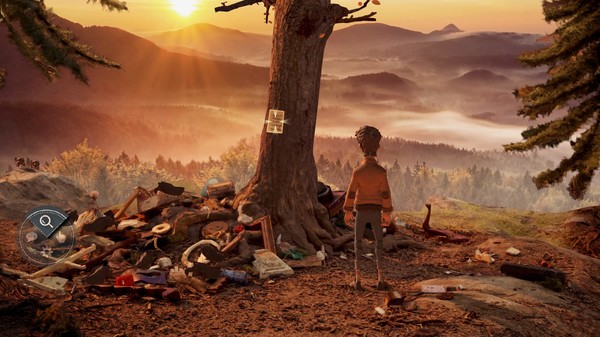
There is also a scene where Hans climbs up to and down from a treehouse. Going up is fine, but coming down is another matter. Rather than descending the ladder, Hans just walks off-screen, with the game transitioning to Hans back on the ground. He then proceeds to walk in a circle for a minute before the game realizes he should be coming down the tree. Hans’ “climbing down a ladder” motions begin, which, since he is on the ground, means he disappears through the earth, and it repeats for the rope ladder portion.
The other egregious “walking in a circle” problem occurs near the end of the game when Hans must interact with an object. If he’s not positioned carefully, Hans books it back toward the area’s entrance.
And while the writing in Truberbrook is excellent for the most part, there are some typos and grammar issues. Strangely, these become much more prominent in the last third of the game, so it’s unclear whether it was just an accident or if perhaps the end was a bit rushed. The same applies to times when the written and voiced scripts don’t match each other.
Lastly, HeadUp included a Kids Mode, which censors parts of Truberbrook, particularly where Hans smokes and encounters a sex toy. These funny moments aren’t integral to the plot, although they are referenced in the game’s joke dialog options.
The main issue is “why include these instances at all, though?” We can all probably count on one hand the number of kids who would willingly choose Kids Mode. What’s more, the goal was to create a family-friendly game, and the game is up for a Best Youth Game in the German Game Developers’ Awards.
Maybe the goal should have been not including those instances to begin with, if a younger audience was intended all along.
Pros
- Fantastic handcrafted world
- Dripping with atmosphere
- Engaging story and characters with fun puzzles
Cons
- Slightly uneven pacing
- Some technical and writing issues
- A few obtuse design choices
Overall, Truberbrook is a delightful experience. Bugs and glitches aside, it’s an engrossing game bound to capture your imagination with its fantastic visuals and atmosphere, loveably bizarre characters, and engaging plot.
It’s the first game of its kind from HeadUp, and I can honestly say I hope we see more like it in the future.
[Note: A copy of Truberbrook was provided by HeadUp Games for the purpose of this review.]



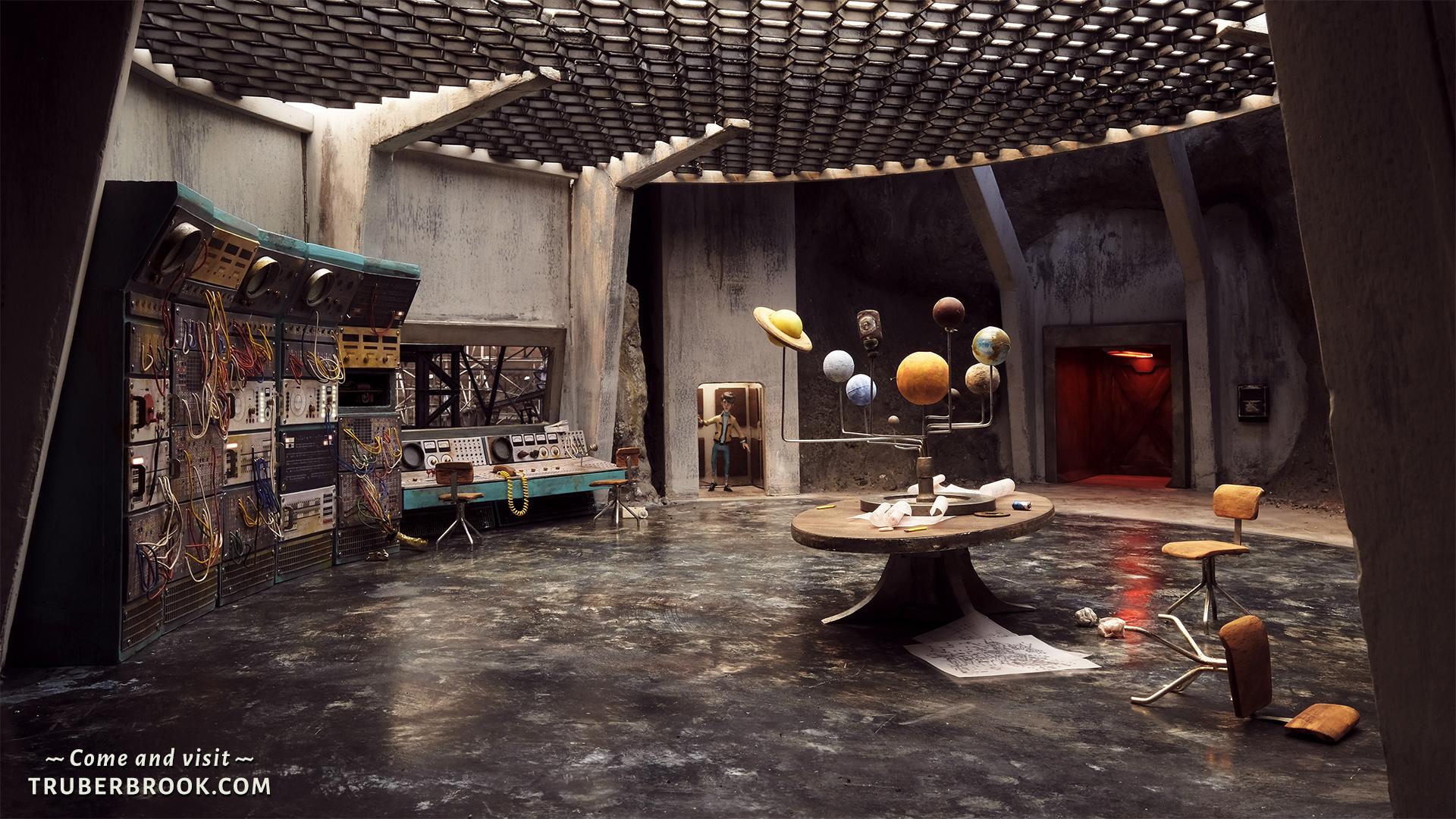
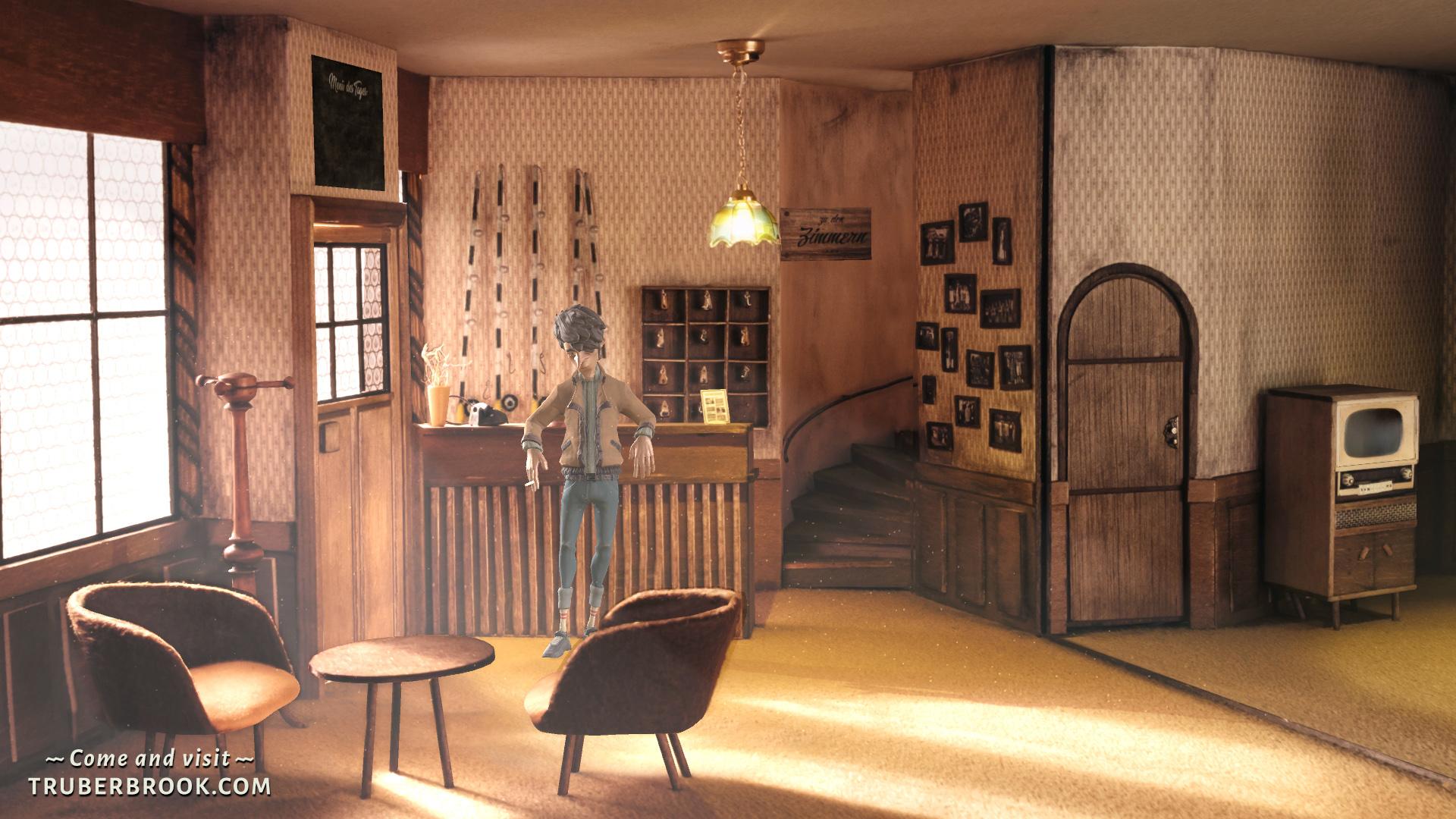
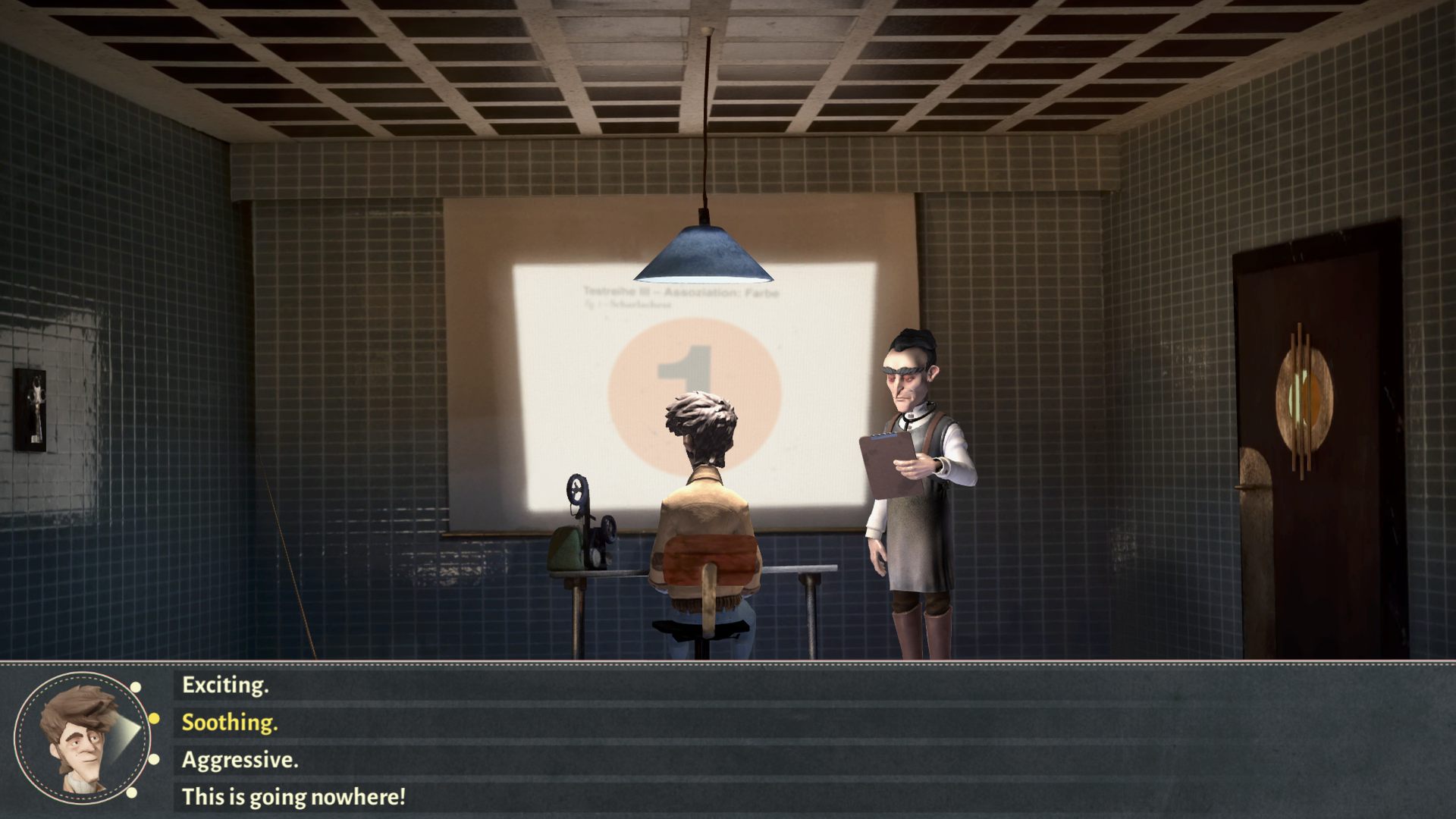
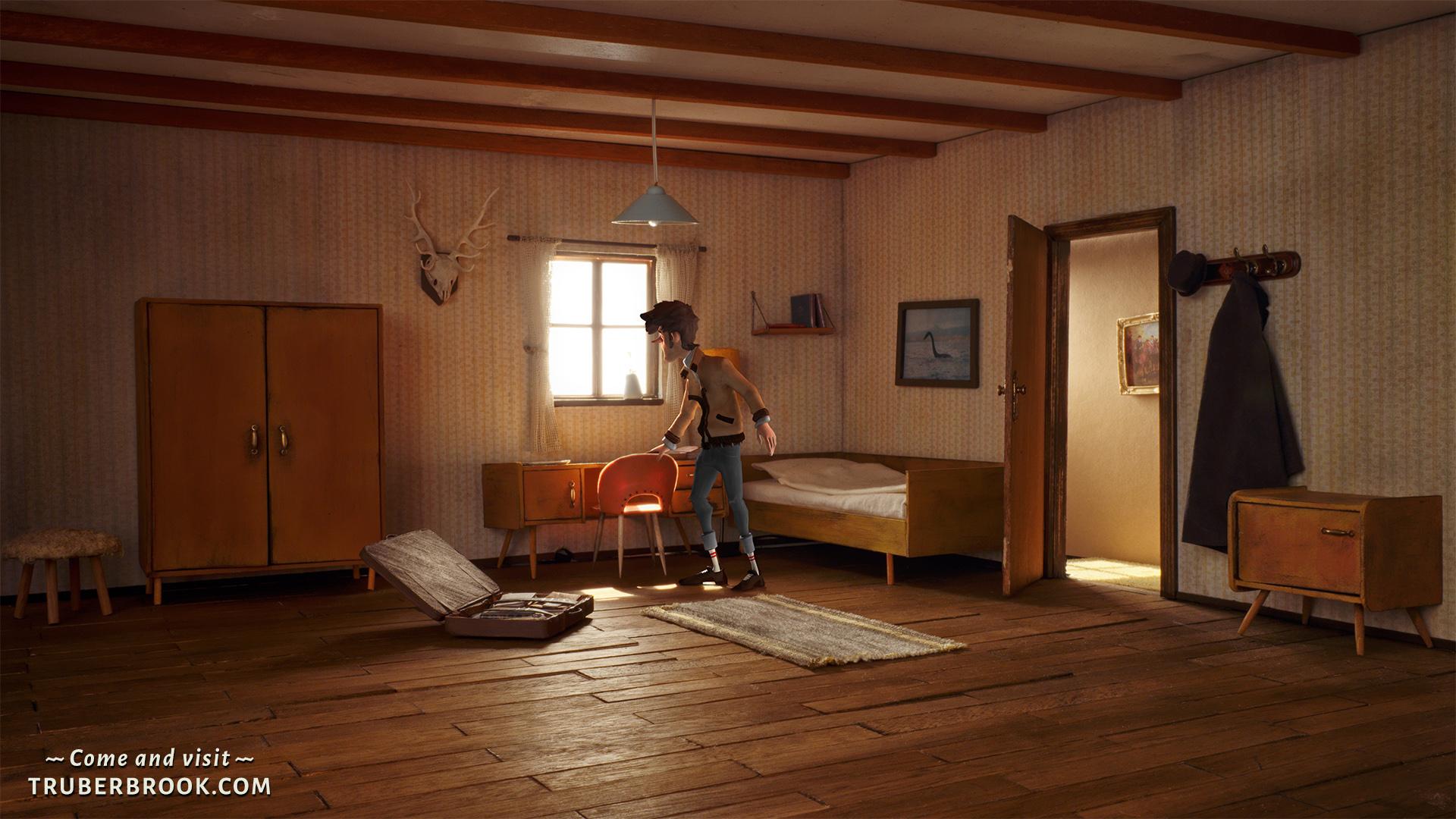





Published: Mar 10, 2019 06:06 pm